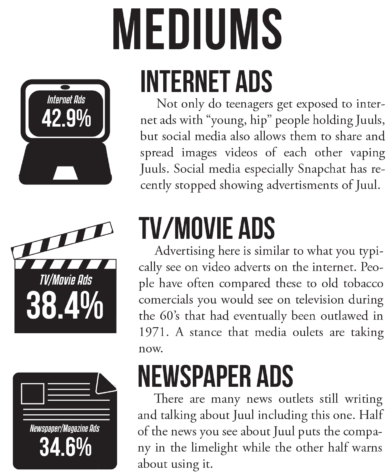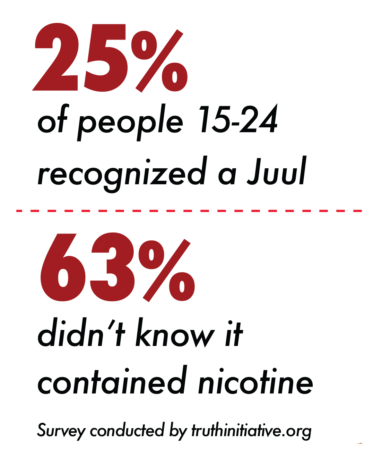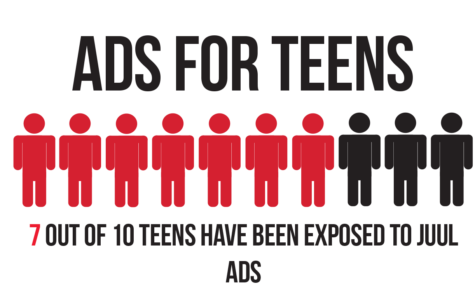While the company claims that they were trying to stop teens from using their products, their actions do not appear to back this up.
Juul’s business practices are coming under the scrutiny of officials like Massachusetts attorney general Maura Healey, who has announced that it is conducting an investigation.
“From our perspective, this is not about getting adults to stop smoking,” Healey said in a New York Times article. “This is about getting kids to start vaping, and make money and have them as customers for life.”
This is alarming for anyone concerned or worried about the youth of our nation. Getting addicted to the harmful effects of these products, or worse.
“A survey of adolescent drug use last year found that 11 percent of 12th graders, 8.2 per- cent of 10th graders and 3.5 percent of eighth graders had vaped nicotine in the previous 30 days.” according to the “Monitoring the Future 2017” report by The National Institute on Drug Abuse at the National Institutes of Health.
Healey has stated that the models and products they use in their ads were to appeal to younger people, for looking cute, or hip in a way to get to tens of millions of smokers addicted while they are young.
In response to the investigation, Matt David, Juul Labs’ chief communication officer, told The New York Times that the company never marketed towards minors, but instead that the adults were to blame because they’ve talked about how popular their company was getting.
At Akins, senior Ben Young said he surprised himself when he recently started vaping. He has seen his dad vaping for the last ve years and thought it was something that he would never do himself. Young said he does not consider vaping harmful except for the ones mixed with toxic artificial flavors.

“I’ve done some research and I’ve learned that there aren’t that many harmful effects that are in natural vapes, because the ingredients they use are the ingredients they use in your cereal,” Young said.
Sometimes vaping among teens takes on a social aspect. Senior Lewis Aguayo said he doesn’t own a Juul himself, but will use a friend’s when they are hanging out.
He said he personally thinks that “they’re really bad” for nicotine addiction, but are not a big danger for all teens.
“I don’t think it’ll make you do harder drugs… I just believe that you’ll get addicted to the nicotine,” he said.








